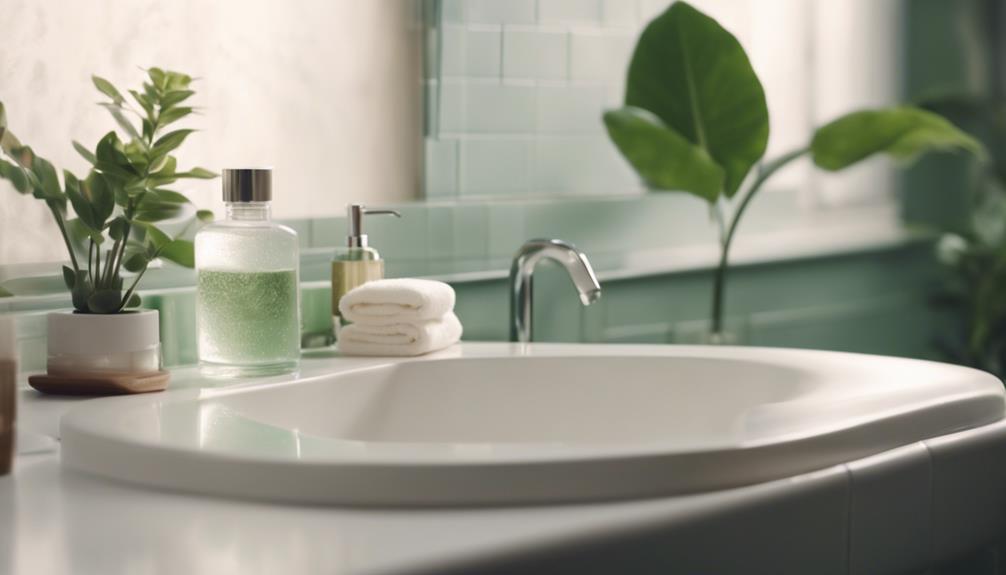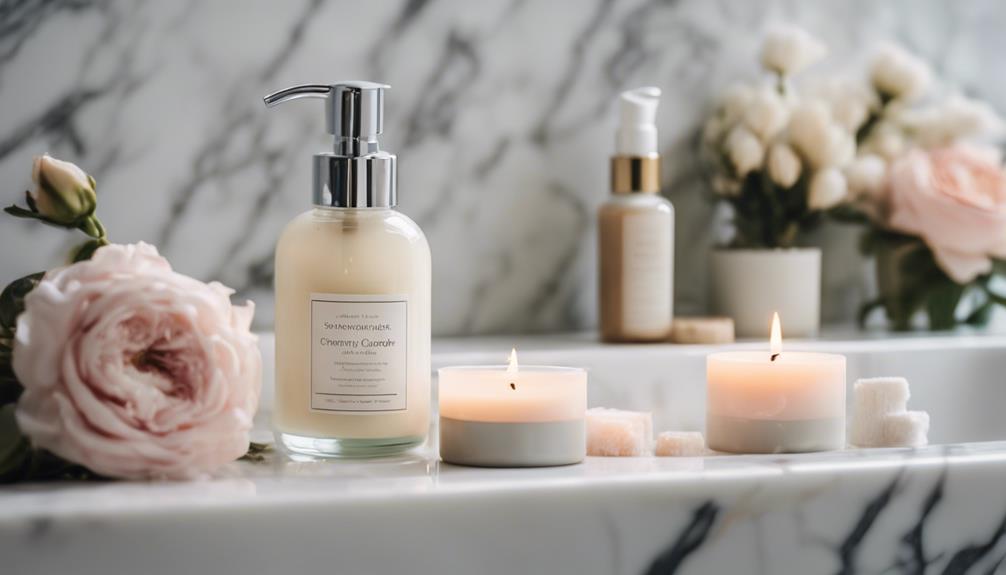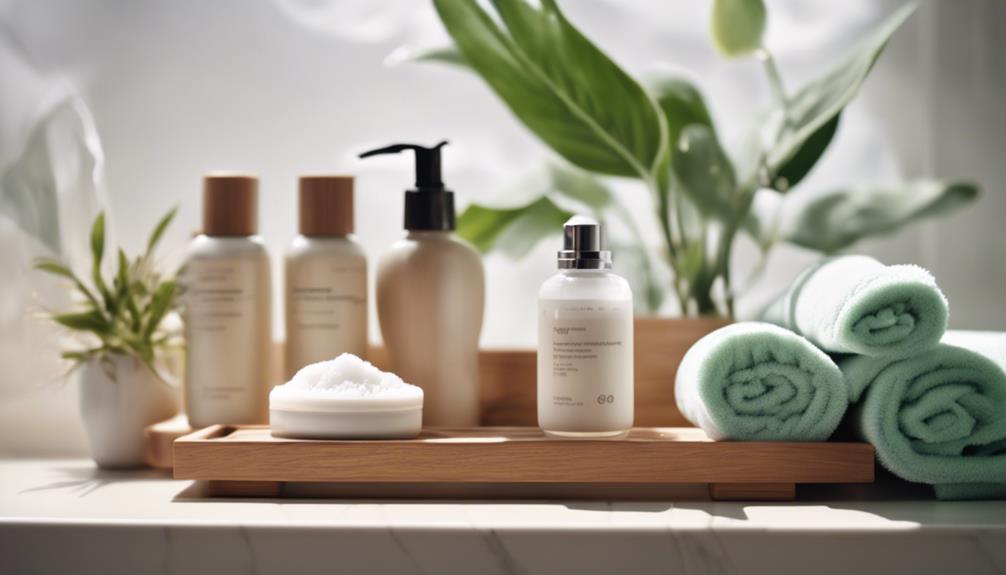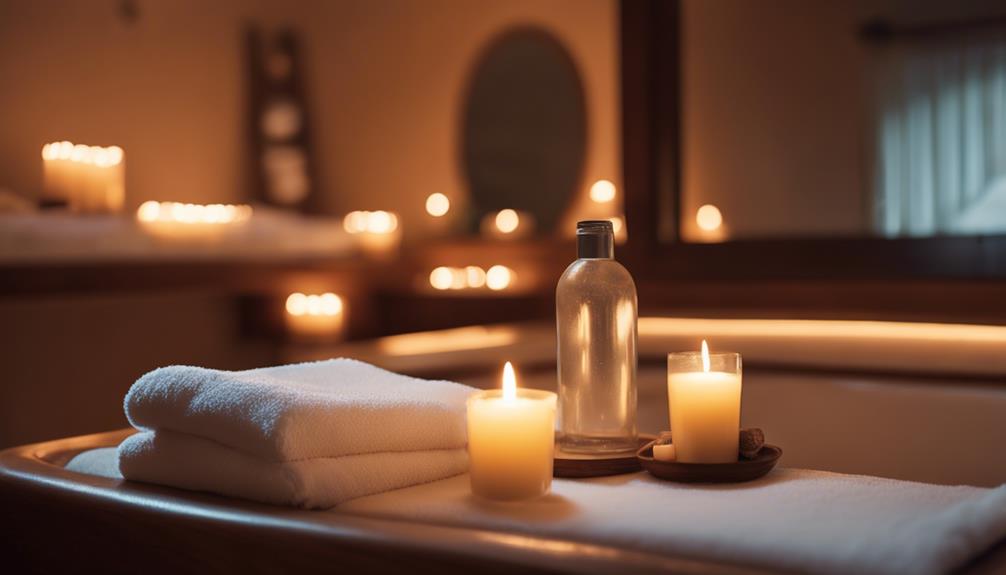For glowing skin, begin with a regular skincare regimen. Start by cleansing your face twice daily to eliminate impurities. Use a toner afterwards to maintain your skin’s pH balance. Then, moisturize your skin on slightly damp skin to lock in moisture. Don’t forget sunscreen; apply a broad-spectrum SPF 30 or higher every morning to shield against UV damage. Regularly include serums or treatments that address your specific concerns, like salicylic acid for acne or vitamin C for brightening. By following these key steps, you’ll encourage a luminous complexion and enhance your skin’s strength. Explore more tips to improve your routine.
Key Takeaways
- Cleanse twice daily with a suitable cleanser to remove impurities and prevent breakouts.
- Use a toner to balance skin's pH and enhance hydration.
- Apply a moisturizer on slightly damp skin to lock in hydration effectively.
- Always use broad-spectrum sunscreen with SPF 30 or higher to protect against UV damage.
Understanding Skincare Basics
Understanding the basics of skincare is essential for achieving and maintaining healthy skin. A solid cleansing routine is your first step. Cleansing removes dirt, oil, and impurities, helping to prevent clogged pores and breakouts. You'll want to choose a cleanser that suits your skin type and use it twice daily—morning and night.
After cleansing, toning balances your skin's pH and enhances hydration. Opt for alcohol-free toners to avoid dryness and prepare your skin for better absorption of your moisturizer.
Speaking of which, moisturizing is vital for locking in hydration. Apply your moisturizer while your skin is still slightly damp to maximize its effectiveness.
Importance of Consistency
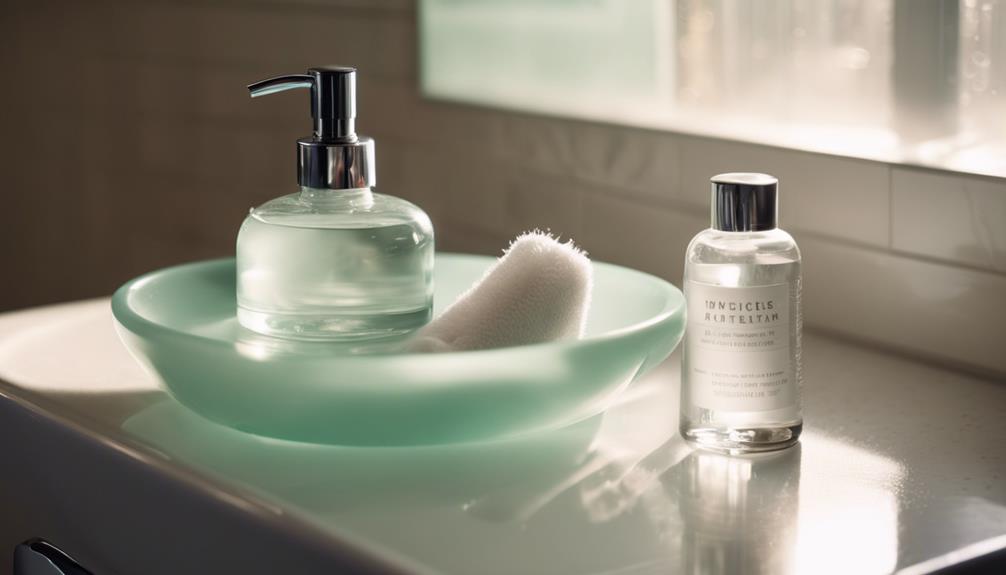
Sticking to a consistent skincare routine is key to achieving lasting results and healthier skin over time. By applying your chosen skincare products daily, you enhance their effectiveness and build your skin's resilience. Dermatologists suggest maintaining your routine for at least six weeks to notice significant changes in your skin's condition and texture.
Regularly following both a morning and evening regimen promotes skin health, improving your overall appearance while addressing specific concerns like dryness or acne. It's important to listen to your skin's needs and adjust your products accordingly, especially with seasonal changes.
To help you stay on track, consider keeping a skincare journal. This tool allows you to document how often you use your products and track their effectiveness. By noting any changes in your skin, you can guarantee your consistency in a skincare routine aligns with your desired outcomes.
Choosing the Right Products
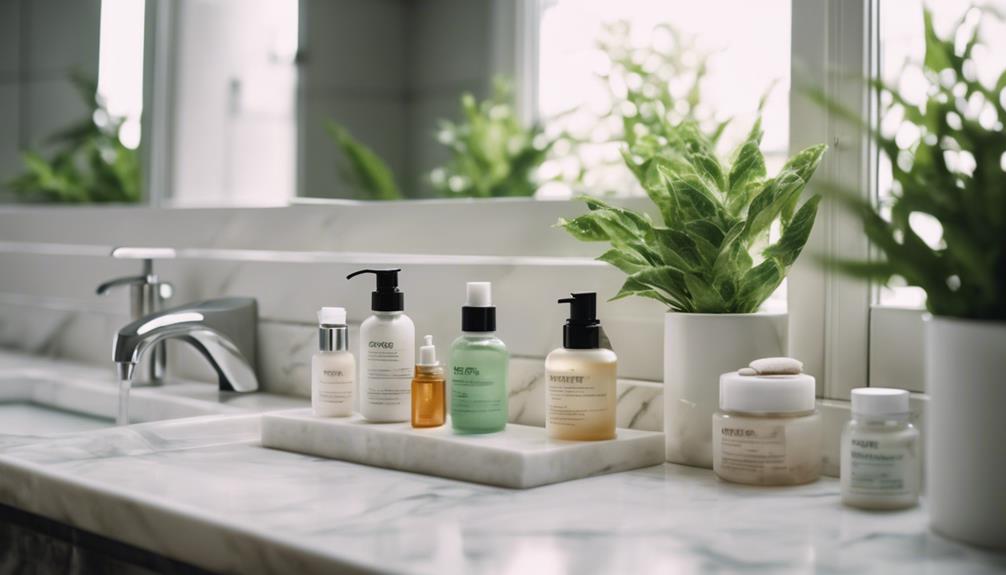
Choosing the right skincare products can greatly impact your skin's health and appearance, ensuring you address specific concerns effectively. It's crucial to select products based on your skin type. For instance, if you have oily skin, lightweight, oil-free products are ideal, while dry skin types can use hydrating ingredients like ceramides. Always look for non-comedogenic labels, especially if you're prone to acne, to avoid clogged pores.
Incorporate key ingredients tailored to your skin concerns. Salicylic acid works wonders for acne, while retinoids can help reduce signs of aging. Remember, your skin's needs may change over time due to factors like seasons, age, or lifestyle. So, be sure to reassess your skincare routine regularly.
Before diving into new products, always conduct a patch test on a small area of skin. This simple step can help you avoid potential adverse reactions, especially if you have sensitive skin.
Cleansing Techniques
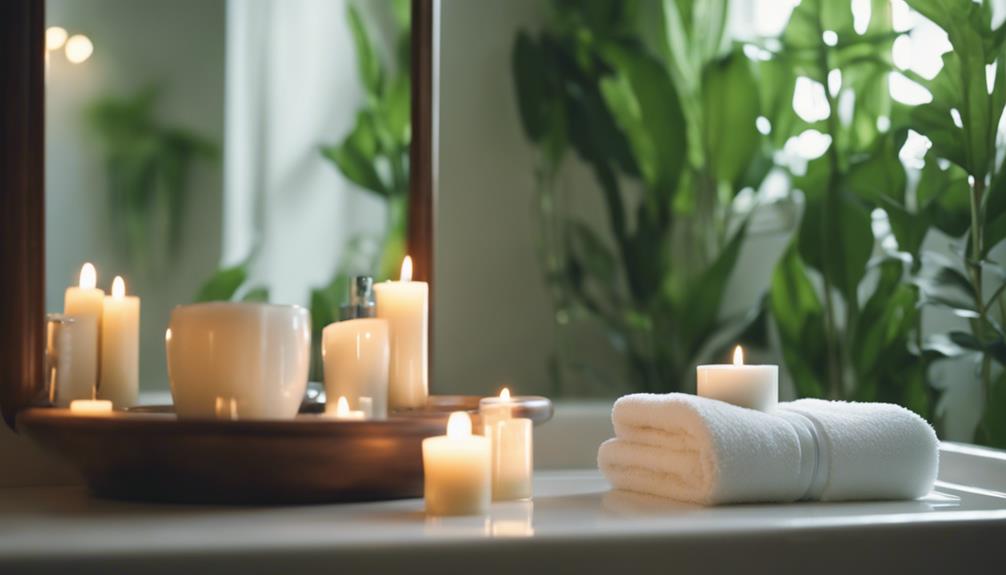
Cleansing your skin effectively is essential for removing impurities and maintaining a healthy complexion. To achieve the best results, you'll want to use proper cleansing techniques.
Start by cleansing twice daily to clear away dirt, oil, and makeup that can clog pores and lead to breakouts. Rinse your face with lukewarm water; hot water can strip your skin barrier of natural oils, resulting in dryness and irritation.
Choose a gentle cleanser suited to your skin type. If you have oily skin, a gel cleanser works well, while cream-based cleansers are better for dry or sensitive skin. If you're wearing heavy makeup or sunscreen, consider double cleansing. Begin with an oil-based cleanser to effectively remove makeup, then follow up with a gentle foaming cleanser for a thorough clean.
After cleansing, always pat your skin dry with a clean towel instead of rubbing it. This simple step helps retain moisture and prevents irritation, keeping your skin balanced and healthy.
Morning Skincare Routine
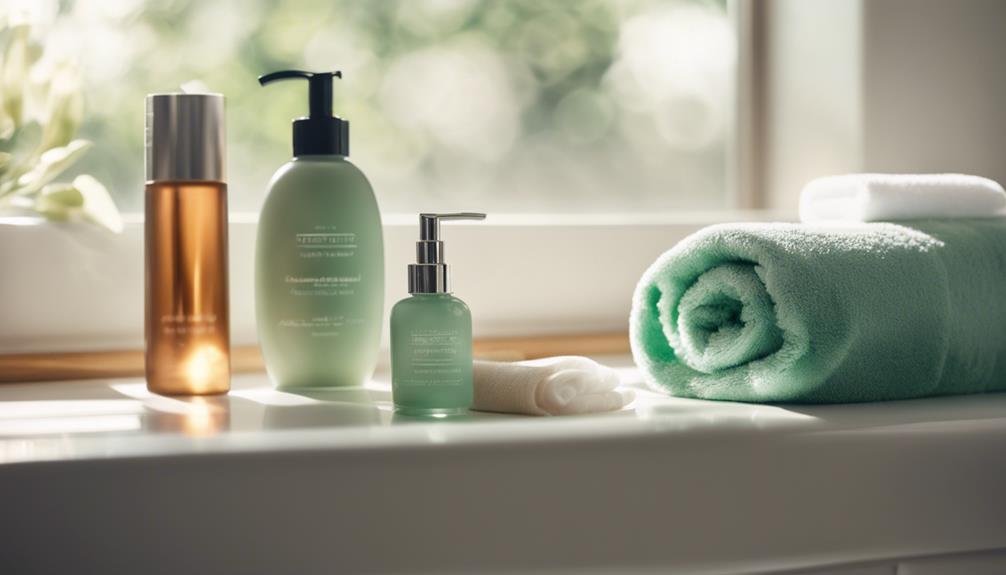
Your morning skincare routine starts with cleansing to wash away overnight impurities, setting the stage for healthier skin.
After that, don't skip the toner and targeted treatments, as they can boost your skin's overall appearance.
Cleansing Techniques Explained
A proper morning skincare routine starts with effective cleansing to remove overnight buildup and prep your skin for the day ahead.
Begin by splashing your face with lukewarm water, as this helps open your pores without stripping away natural oils. Choose a gentle, alcohol-free cleanser that suits your skin type. If you have oily skin, a gel cleanser works best; for dry or sensitive skin, opt for a cream cleanser.
Gently massage the cleanser onto your face using circular motions, focusing on areas prone to oil buildup, like the T-zone. This technique not only cleanses but also stimulates circulation, promoting healthy skin. Rinse thoroughly with lukewarm water until your skin feels clean and residue-free.
After cleansing, it's essential to follow up with a toner to balance your skin's pH and a moisturizer to lock in hydration. This two-step follow-up will enhance the effectiveness of your skincare routine, ensuring your skin stays nourished throughout the day.
Importance of Sunscreen
After moisturizing, applying sunscreen is essential for protecting your skin from harmful UV rays that can lead to premature aging and increase skin cancer risk. A broad-spectrum sunscreen with an SPF of 30 or higher is your best defense against both UVA and UVB rays.
It's important to know that regular application of sunscreen can reduce the risk of skin damage by up to 80%, helping maintain your skin health and an even skin tone by preventing hyperpigmentation.
Make it a habit to apply sunscreen every morning, even on cloudy days, as UV rays can penetrate through clouds. And don't forget to reapply every two hours, especially if you're swimming or sweating. This consistent protection is key to keeping your skin looking youthful and radiant.
Incorporating sunscreen into your daily routine isn't just a suggestion; it's crucial. Studies show that those who regularly use sunscreen enjoy significant improvements in their skin health and appearance over time.
Evening Skincare Routine
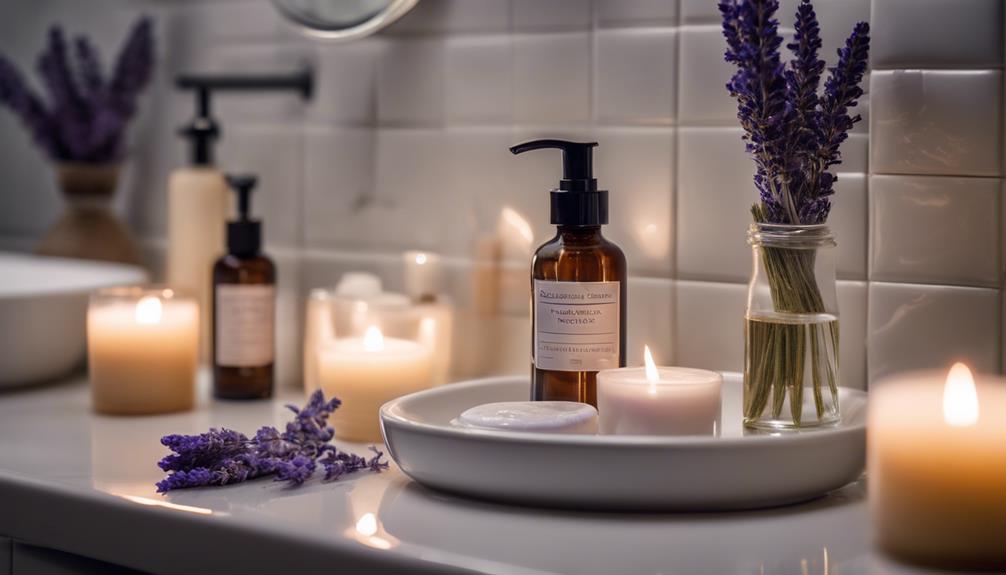
Cleansing the skin at night is essential for removing impurities and allowing targeted treatments to work effectively while you sleep.
Start your evening skincare routine with a gentle cleanser to eliminate makeup, sunscreen, and dirt. Rinse thoroughly with lukewarm water to avoid irritation and prep your skin for the next steps.
Once your face is clean, consider using a toner. This step helps restore your skin's pH balance and enhances the absorption of subsequent products—especially if you're using exfoliating toners a couple of times a week.
After toning, it's time to incorporate serums tailored to your skin's needs. Whether you choose a retinol serum for anti-aging benefits or a salicylic acid serum for acne, apply it after toner to maximize effectiveness.
Key Ingredients to Include
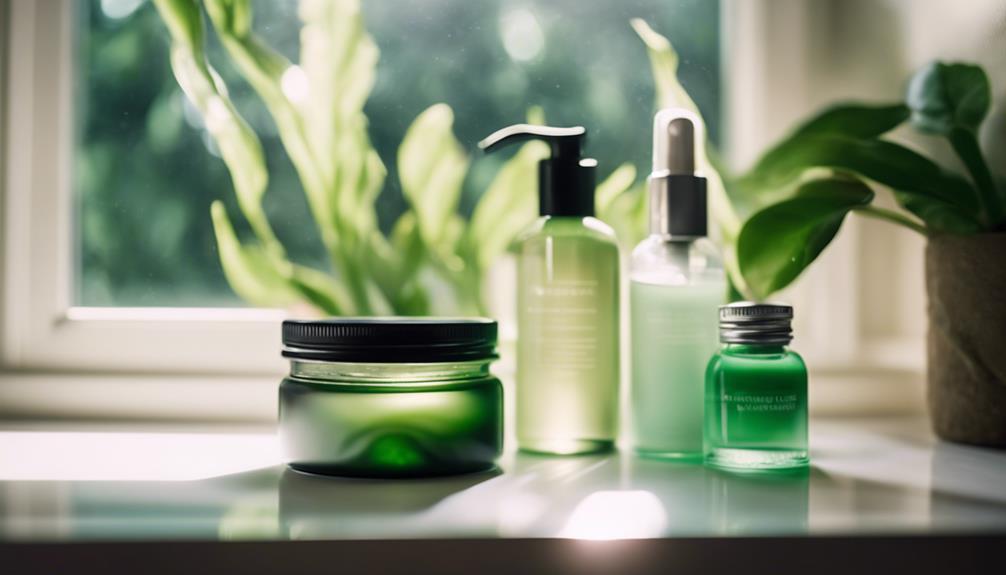
When crafting your skincare routine, it's vital to include key ingredients that address your specific needs.
You'll want hydration-boosting ingredients to keep your skin plump, antioxidants for protection against environmental damage, and targeted treatments to tackle any concerns.
Let's explore these essential components to elevate your skincare game.
Hydration Boosting Ingredients
Releasing ideal hydration for your skin involves incorporating key ingredients that deliver powerful moisture-boosting benefits.
Start with hyaluronic acid, a remarkable humectant that can hold up to 1,000 times its weight in water, ensuring your skin stays plump and hydrated.
Next, consider glycerin, a natural moisturizer that draws water from the environment into your skin, effectively maintaining hydration levels and enhancing your skin barrier.
Don't overlook ceramides, essential lipid molecules that restore your skin's natural barrier. They lock in moisture and protect against environmental stressors, vital for long-lasting hydration.
Adding aloe vera to your routine can provide soothing hydration while delivering vitamins and minerals that promote overall skin health.
Lastly, incorporate squalane, a lightweight oil that mimics your skin's natural oils. It offers deep hydration without clogging pores, making it suitable for all skin types.
Antioxidants for Protection
Incorporating antioxidants into your skincare routine is essential for protecting your skin from environmental damage and promoting a youthful appearance.
These powerful ingredients, like vitamin C, help neutralize free radicals from UV exposure and pollution, reducing oxidative stress that leads to premature aging.
Here are three key benefits of including antioxidants in your routine:
- Boosts Skin Brightness: Vitamin C inhibits melanin production, helping to even out skin tone and enhance your overall glow.
- Reduces Fine Lines: Regular use of antioxidant-rich products supports collagen production, combating the breakdown of collagen fibers and minimizing the appearance of fine lines.
- Enhances Efficacy: Antioxidants like ferulic acid can stabilize and boost the effectiveness of other active ingredients in your skincare regimen, maximizing their benefits.
Targeted Treatments for Concerns
Targeted treatments allow you to tackle specific skin concerns effectively, using key ingredients that address everything from acne to signs of aging. By incorporating the right ingredients into your routine, you can see considerable improvements in your skin's appearance.
Here's a quick overview of some powerful key ingredients to take into account:
| Skin Concern | Key Ingredient |
|---|---|
| Acne | Salicylic Acid |
| Fine Lines/Wrinkles | Retinoids |
| Hyperpigmentation | Vitamin C |
| Loss of Firmness | Peptides |
| Dehydration | Hyaluronic Acid |
Salicylic acid penetrates deep into pores, effectively reducing acne by exfoliating within. Retinoids stimulate cell turnover and boost collagen production, which helps to diminish fine lines. For brightening and evening skin tone, vitamin C serves as a powerful antioxidant. If you're looking to enhance skin firmness, peptides support repair and elasticity.
Incorporating these targeted treatments into your skincare routine can considerably address your specific concerns, helping you achieve healthier, more radiant skin.
Additional Skincare Tips
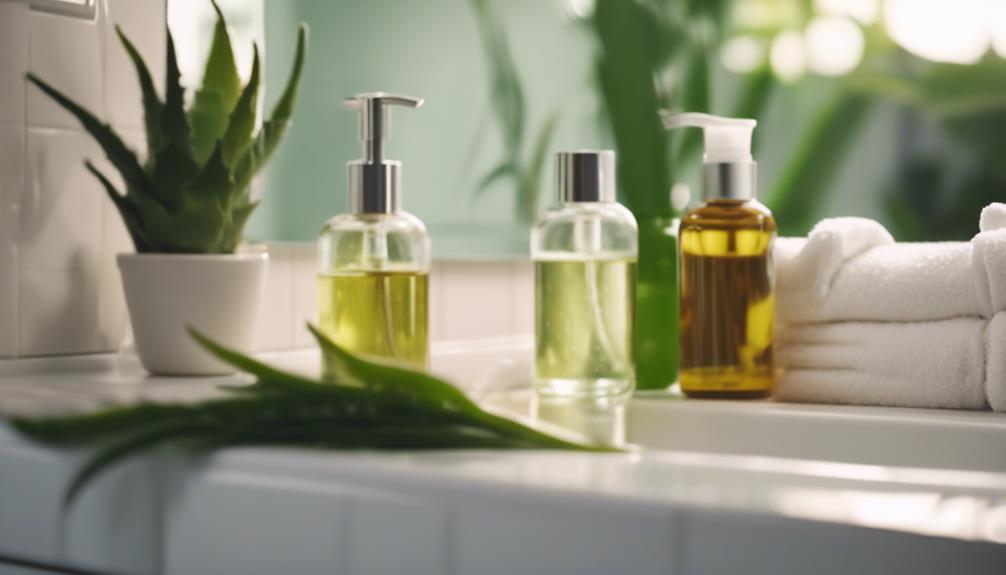
To keep your skin looking its best, remember to apply sunscreen daily and stay hydrated by drinking plenty of water.
Sunscreen with a broad-spectrum sun protection factor (SPF) of 30 or higher helps shield your skin from harmful UV rays, preventing premature aging. Staying hydrated is essential for maintaining skin elasticity, so aim for at least eight glasses a day.
Here are three additional tips to enhance your skincare routine:
- Exfoliate regularly: Exfoliating 1-3 times a week removes dead skin cells and improves texture. Choose a method that suits your sensitive skin, whether it's gentle physical scrubs or chemical exfoliants like AHAs.
- Use a moisturizer: Lock in hydration by applying a suitable moisturizer after cleansing. This helps maintain your skin's moisture barrier and keeps it looking plump and healthy.
- Adjust seasonally: Modify your skincare routine according to the season. In winter, increase hydration with richer products, while in summer, opt for lighter formulations to avoid clogging pores.
Healthy Lifestyle Impact
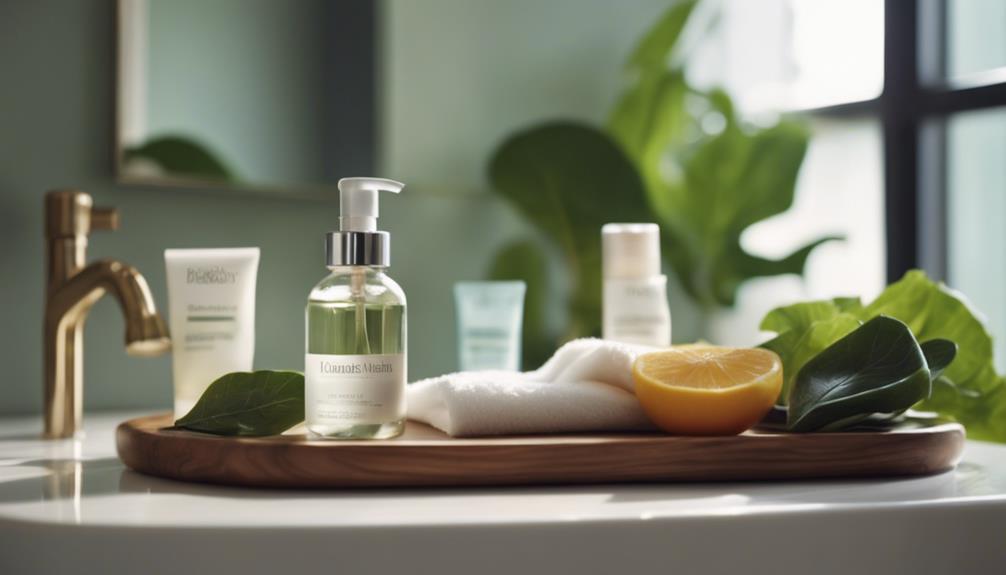
Your skincare routine can greatly benefit from a healthy lifestyle, as what you eat and how you care for your body directly influences your skin's appearance and health. A balanced diet rich in fruits, vegetables, whole grains, and lean proteins provides essential nutrients that promote clear, glowing skin. This dietary approach helps combat skin issues by delivering vitamins and antioxidants necessary for skin repair and protection.
Hydration is another key factor; aim to drink at least eight glasses of water daily. Staying well-hydrated maintains skin moisture and elasticity, considerably impacting overall skin health.
Incorporating regular exercise into your routine enhances blood circulation and promotes sweating, which aids in detoxification and supports collagen production. This contributes to healthier, more resilient skin.
Don't overlook stress management, either. Mindfulness practices or physical activities can help mitigate skin conditions like acne and rosacea since elevated stress levels are linked to skin flare-ups.
What are the essential steps for maintaining healthy skin in a daily skincare routine?
In order to maintain a healthy skincare routine maintenance, it is important to follow essential steps. These include cleansing the skin daily to remove dirt and oil, moisturizing to keep the skin hydrated, using sunscreen to protect from harmful UV rays, and incorporating a healthy diet and staying hydrated for overall skin health.
Conclusion
Incorporating a solid skincare routine can transform your skin's health, and you're not alone in this journey—studies show that 80% of people experience skin issues at some point in their lives.
By following these essential steps and choosing the right products, you can maintain that glow you desire.
Remember, consistency is key, and small daily habits lead to significant results over time.
Embrace your routine, and enjoy the journey to healthier skin!


